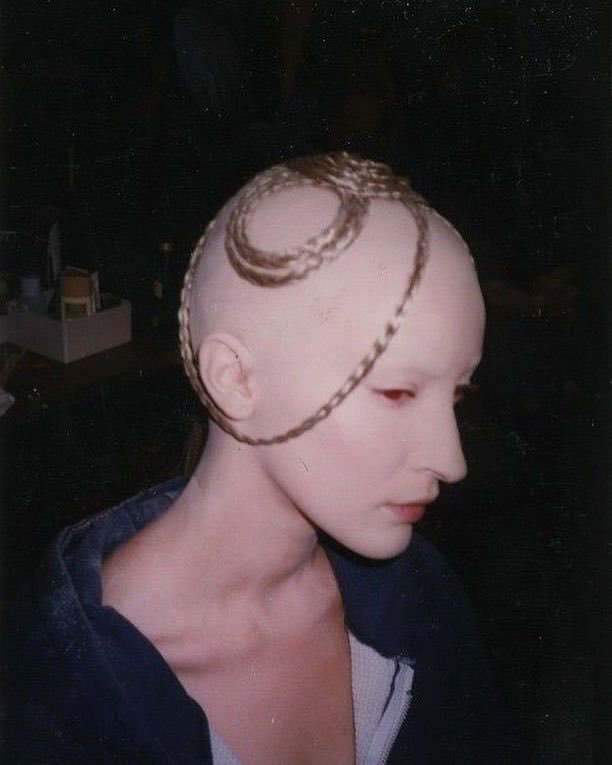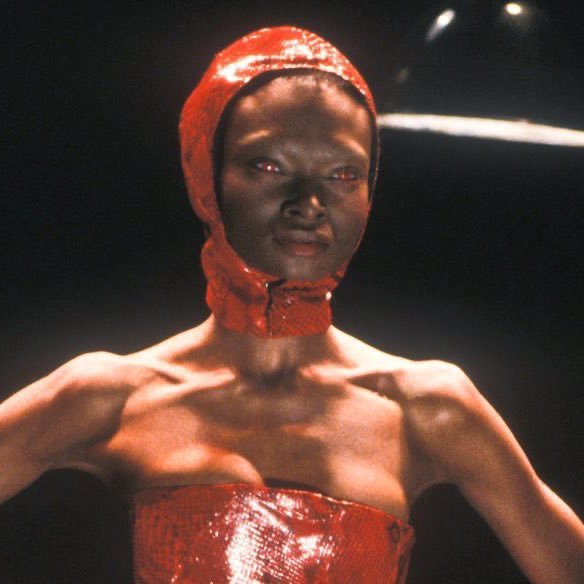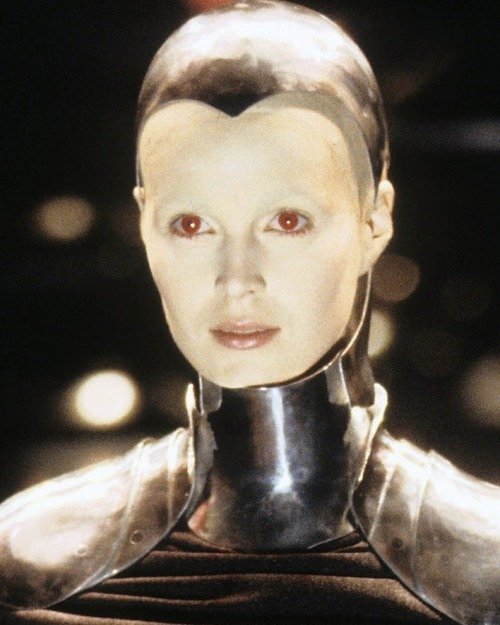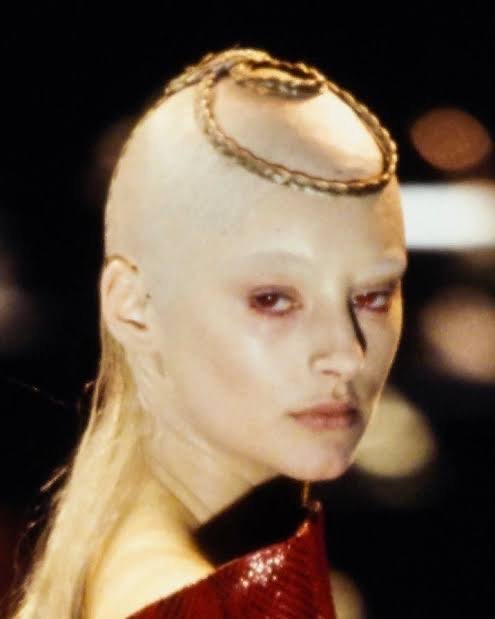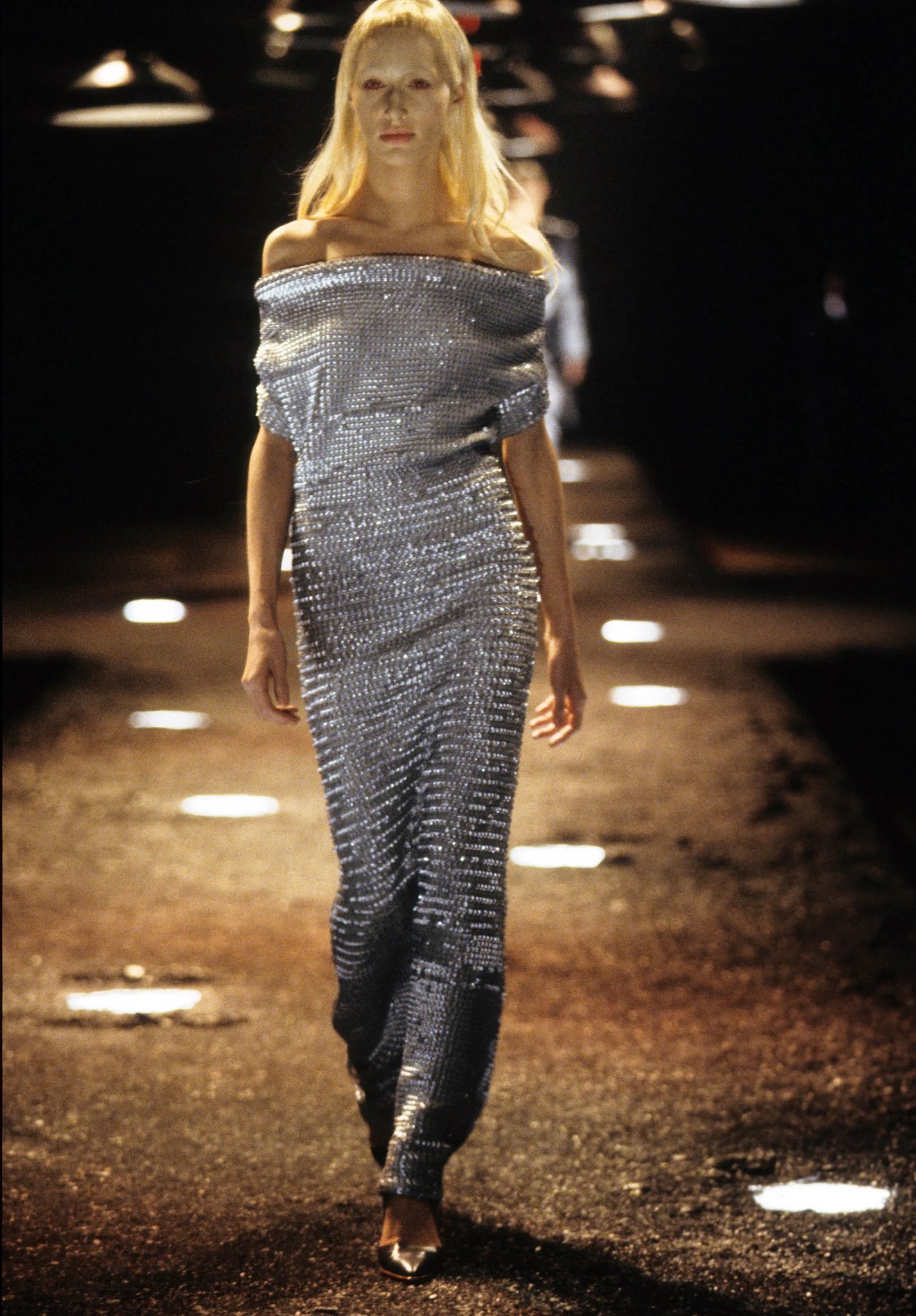ALEXANDER MCQUEEN - DARKNESS AND DREAMS: Analysing Joan of Arc FW98
Alexander McQueen was simply put a genius, whose works are still the subject of much praise and analysis in the fashion industry. The Spring/Summer show of 1998, titled Joan of Arc remains one of his most sinister and political shows, taking inspiration from the French idol and martyr of the same name as well as the murders of the Romanov family and their relationships with themes of violence and persecution.
Joan of Arc
Jeanne d’Arc
Joan of Arc was the main theme of this runaway show. Joan was a pious peasant girl, who later became a military leader in medieval France. After being burnt at the stake by authorities, she was canonized and went down as one of the most iconic women in history. While working for Givenchy House in Paris, McQueen used to pass by the golden Jeanne d’Arc statue near the Place des Pyramides. He was so intrigued that it influenced him to examine her story in more detail. McQueen would get inspiration not from a specific woman, but generally from the allure of women’s hidden minds in the past. Alexander was different from your typical man, he wasn’t transfigured by beautiful women in the streets, on the contrary, he was drawn to powerful figures, like Catherine the Great or Marie Antoinette.
McQueen’s was the final show of London Fashion Week, on February 25th at the Gatliff Road Bus Stop. The place was picked for two reasons. Firstly, it was related to the theme where Joan was burnt at the stake in 1431. Second, McQueen gathered inspiration from an image of Agnes Sorel by the French artist Jean Fouquet. The two women had devoted themselves to the French king Charles VII—Joan as a self-sacrificial spiritual leader and Agnes as mistress and mother of three illegitimate children. Both women had died serving—Joan at the stake and Agnes, in 1450, after giving birth, a death which was later thought to have been a result of mercury poisoning.
Virgin and Child Surrounded by Angels
For the show’s glossy invitation, McQueen chose an image of Agnes from Fouquet’s Melun Diptych, Virgin and Child Surrounded by Angels, painted around 1452. Nothing could define the whole aesthetic of the show better than this, starting with the colour palette and ending with details such as the high, pale forehead, showing a glimpse of a curled plait that sat just below the crown. Although McQueen—who had just dyed his hair blonde—initially wanted to send the models out looking completely bald, the hair stylist Guido Palau thought this would be too severe, so they agreed on a high hairline.
Many of the model’s heads were covered with bald caps and draped with thin blond woven plaits, while their eyes were fitted with blood-red contact lenses, a look described by McQueen’s make-up artist Val Garland as “Joan of Arc kidnapped by aliens”. The presence of such fearless but at the same time sexualised women served as a counterpoint to the murder of innocents.
The location of the show itself was threatening; a black catwalk covered in cinders and chandeliers swinging from the ceiling. With the colour palette of the collection filling the atmosphere, the room exuded scary ominous tones. At the beginning of the catwalk, a curtain opened slowly, showing a red wall, resembling an eerie open wound as the red light mimicked blood.
The first model who opened the runway was wearing a short dress made of shining grey chain mail, symbolising the armour of Joan of Arc. She was bald with braids extending over her face to the point of covering her mouth. Blond hair fell behind her shoulders.
The second look was chain mail as well, featuring a long dress with a mail coif. The clothing could also have had religious connotations as it resembled the silhouette of a nun, a reference to the solid belief in God that Joan had. Another look showcased chain mail to really show its importance, as ancient soldiers once used it to fight in wars, protecting themselves from being hurt by edged weapons.
Romanov Theme
The Romanov sequence followed as a highlight of the show spawning controversy as McQueen used pictures of the Romanov children killed by Bolshevik revolutionaries in 1918. The print reflected the theme of innocence and violence as their life was brutally ended.
Technical designs were sent to Italian manufacturer Gibo and were then re-elaborated by McQueen in London. The looks consisted of sequins over black and white photos; the gleaming of the garments recalled the privileged life these children had, and the dark tones alluded to their terrible fate.
The first in particular was a cheongsam gown made entirely of sequins and cotton, the gown had a high neck and long shining sleeves with buttons in the cuffs and on the top. It was shorter in the front and reached the model's ankles in the back, and was styled with grey trousers and heels.
The attention-grabbing detail of the following look was the bloody red inside of the shimmering dark coat. In between the historical prints, there was a clear coat with shoulder pads and a back and front slit. The model wore a grey turtleneck with gold underneath it and black heels.
One of the most iconic and marvellous outfits of the whole runway show was this armour created by Sarah Harmarnee. As an evident allusion to Joan of Arc, the model’s arms, hands, shoulders, necks and head were protected by metal pieces. The look was completed with leather trousers.
In the last scene, McQueen re-enacted Joan’s death. A model wearing a breathtaking dress fashioned from red bugle beads and a red mask stepped onto the stage alone and was surrounded by a ring of fire. The faceless look of the model might represent the fact that Joan was so heavily looked down upon and shamed by those in positions of power. Like many other artists who were inspired by her powerful figure, McQueen depicted her strength combined with her femininity and devotion. The anonymous female figure stood defiant on a stage, surrounded by the flames, and became a symbol of McQueen’s women. He finally determined his prototype of a woman figure: strong, resilient, a survivor of unknown horrors. Progressing through life, he found himself drawn to a series of women who had endured physical, psychological or sexual torment and, as a survivor himself of childhood abuse, he is assumed to have a close connection with them.

